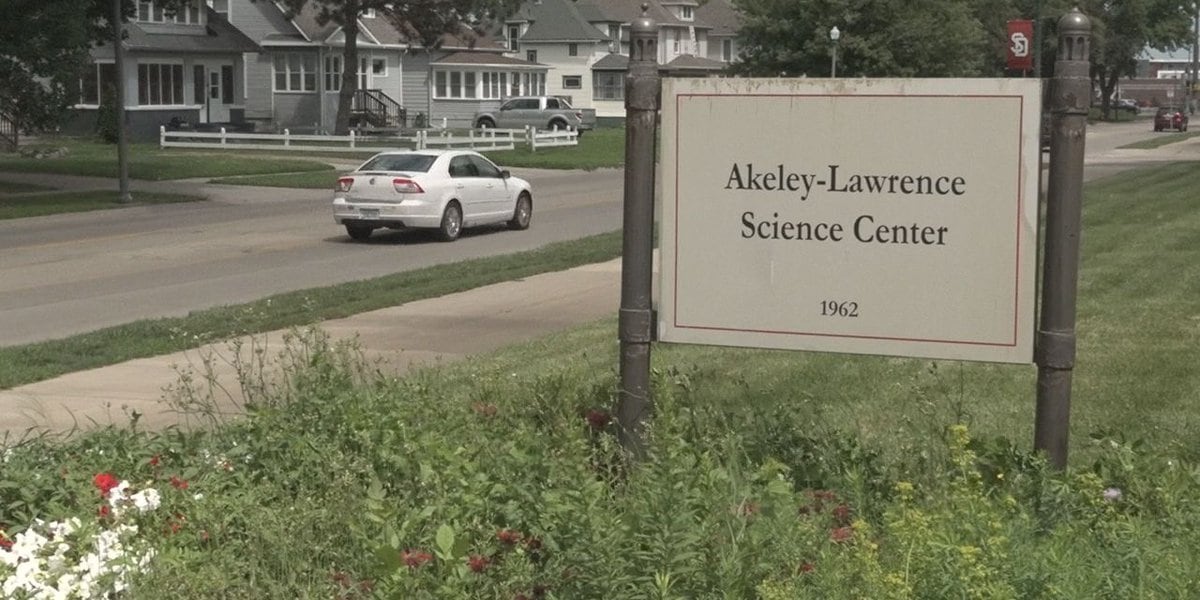VERMILLION, S.D. (Dakota News Now) – Director Christopher Nolan’s new film, “Oppenheimer,” will explore the life of J. Robert Oppenheimer, a scientist who developed the atomic bomb and dealt with the weight of creating a weapon of destruction never before seen. Many might not know that South Dakota has a connection to the film.
In the movie, actor Josh Hartnett will portray Ernest Lawrence, who grew up in Canton, South Dakota, and graduated from the University of South Dakota. His degree was in chemistry and he would later win a Nobel Prize in physics and made significant contributions to the development of the atomic bomb.
On the old stomping grounds of Lawrence’s, there’s growing excitement for one of the summer’s biggest films.
“I’m looking forward to seeing the movie, especially how Lawrence is portrayed,” said Tina Keller, Physics Professor Emerita at USD. “It’s really cool that one of the foundational pieces of equipment is credited to a guy that graduated from USD.”
Lawrence won his Nobel Prize for his invention of the cyclotron, a nuclear particle accelerator. Lawrence’s work with the cyclotron was crucial to helping scientists look into the center of atoms because to look at the atoms, they need to be moving at high speeds. The cyclotron used a magnetic field to control an electrically-charged particle and sent it through two half circles with a slight gap in between to make it go faster.
His work is foundational to nuclear physics, a subject not often explored in Hollywood features.
“As a physicist, we’ve always said people don’t really understand what we do and it’s always really dry,” Keller explained. “Here, you’re going to have a blockbuster movie of the summer that’s really mostly about physics. I’m sure they made it interesting with some personalities in there.”
The University of South Dakota is proud to have had Lawrence as a student from 1919 to 1922. They named one of their science centers after him and one of his mentors, Lewis Akeley. Akeley’s role was the Dean of Applied Science at USD. At the time, they were not able to offer a degree in physics, but Akeley taught physics and would provide guidance to Lawrence.
Under Akeley’s guidance, Lawrence started up the campus radio station, KUSD. He was also challenged to study and teach Akeley about quantum mechanics, which was a new area of study at the time.
Lawrence is not just honored at USD. There are also two national labs named in his honor in California: Lawrence Livermore and Lawrence Berkeley.
“A few years ago, I was out at Berkeley for a conference and our meeting was actually held in a room that had a little plaque outside the door that said this was Ernest O. Lawrence’s lab, which is really cool. Here’s this connection back to South Dakota again,” Keller said.
Dr. Keller said she believes his experiences at USD played a role in his success.
“I think that his desire to have that hands-on touch with things, starting the station, the transmitter, doing all that work really helped him when he got farther along in his career and started to design what theoretically is pretty simple, but technically is pretty challenging,” Keller said.
While much of the film is about dealing with the pressure of racing to get the atomic bomb first, there’s also a focus on the psychology of those who know that what they helped develop is a weapon of mass destruction. Keller said that to her knowledge there isn’t much published about Lawrence’s own thoughts of the atomic bomb or if he wrestled with helping create it.
There are mixed opinions on the atomic bomb, but nuclear physics, especially the work of Ernest Lawrence, has contributed to so much more than weapons.
“One of the things they realized is these really high energy particles that they’re producing can actually be used in a medical setting,” Keller explained. “It can be used to treat cancer and there’s a story where he and his brother actually treated their mother. The treatment they provided to her actually extended her life.”
Lawrence also studied at the University of Minnesota, the University of Chicago, and Yale University. He passed away in 1958 at the age of 57, but his memory lives on at the places he studied, the places he taught, and now, the silver screen.
Copyright 2023 KSFY. All rights reserved.

South Dakota’s connection to the new film ‘Oppenheimer’ – Dakota News Now
by
Tags:
Leave a Reply